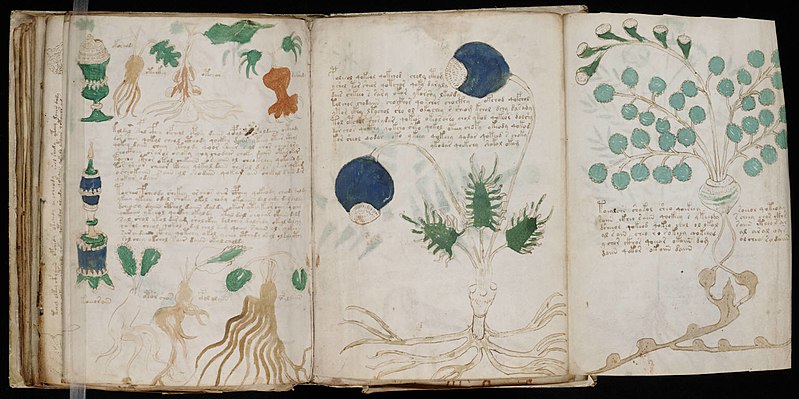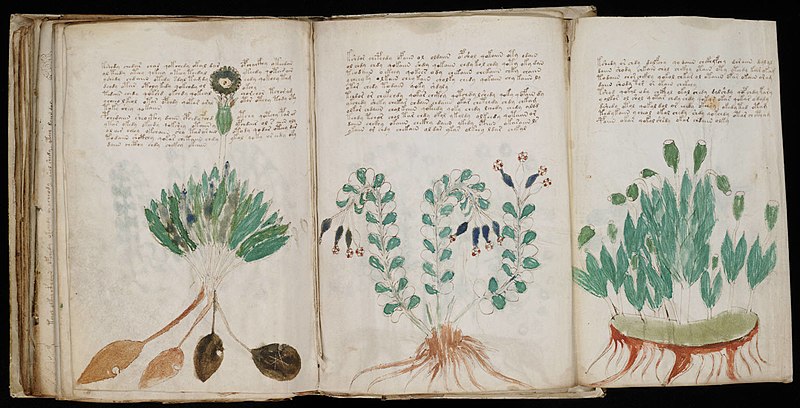The Mystery of the Voynich Manuscript

The legendary Voynich Manuscript is a Holy Grail for historiographers and linguists. This mysterious book was written in the unknown language during the Italian Renaissance. On the pages of Voynich Manuscript, you may see the zodiac signs, plants, astronomic symbols, and receipts of potions. Its pages are decorated with images of women and leaves. Some pages are torn out.
The meaning of these symbols is still obscure, but some scientists hold that this book was used by the ancient herbal healers as a pharmacopoeia. The Voynich Manuscript has been studied by many professionals but no one has yet demonstrably deciphered the text, and its mystery has become a famous case in the history of cryptography. The secret meaning and origin of the manuscript have also excited the public imagination, thus making the manuscript a subject of speculation. None of the many hypotheses proposed over the last hundred years has yet been independently verified, though numerous deciphering claims were made for years. One of the latest deciphering sensations was that of Gerard Cheshire. In May 2019, the UK scholar claimed to have cracked the code and deciphered the meaning of the manuscript by referring to the vernacular proto-Romance language of the 15th century that was mostly used orally, not in writing.
This unique manuscript is now the property of the Beinecke Rare Book & Manuscript Library at Yale University. It is not available for sale and will never be, unlike many other old books selling pretty well at auctions around the world. The precious Voynich Manuscript is properly preserved in special climatic conditions and according to all museum standards of storing antique books of exceptional value.
The good news for the fans of the Voynich Manuscript’s mystery is that in August 2016, a Spanish publishing house received the right to issue almost 8,000 copies of the manuscript. Those taking an active interest in the study of the manuscript may find one in different museums and private collections. Join the game of decoding the chef-d’oeuvre!


